Results 21 to 30 of 57
Thread: History of the "Magog Oilstone"
-
02-01-2014, 02:30 PM #21

I purchased this one some years ago from Neil Miller.
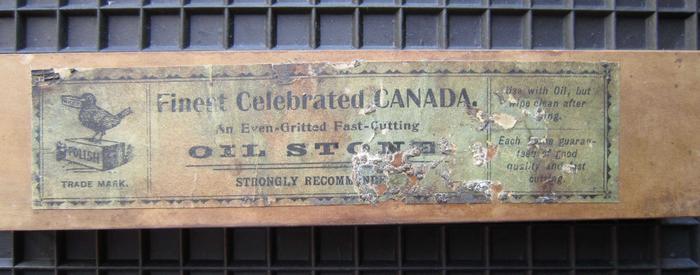
Also here the name Magog is not mentioned on the label, so it is not proven if this is a Hindostan or Magog or from another quarry. Neil wrote about the stone:
This type of stone has been mentioned in a book dated 1892 by A. J. Bower called "How To Make Things," in which he states "...for the fine edge you must use the oilstone. There are several kinds of oilstone employed for setting edged tools; the best and the greatest favourite with our carpenters is the Charnley forest stone, which is found in Leicestershire. The Canada oilstone is also a good stone, and costs somewhat less than the Charnley stone..."
It is mentioned in another text by C. P. B. Shelley dated between 1827 and 1890 in which it is stated: "...Canada Oilstone. A very fine porous sandstone of a greyish white colour, which has been recently introduced. Being much less compact than any of the preceding stones, it is much more rapidly worn away. Its first cost is, however, rather less than that of Charnley Forest."
What is not clear is where the stone originated from, but there are some tantalising clues. In appearance the stone is exactly similar to the Hindostan stone, a rather slow but fine finisher composed mainly of novaculite and layered in characteristic strata. In the scant literature available it appears that there is a long narrow lake lying partly in Canada (it is between Vermont, USA and Quebec, Canada), called Lake Memphremagog. On an island in the lake is an outcrop of novaculite that was mined for hone stones. In 1817 a company started by a certain Roman Fyler in Vermont sold shaving brushes an boxes. One day somebody bought a hone from the island to Mr Tyler and he saw that it was ideal as a razor hone, and included them from then on in his shaving boxes - he also bought the quarry on the island. After some time the shaving brush and box industry declined and Mr Tyler just produced the oilstones - sold at that time as Magog Oil-Stone. It may well be that this same island quarry produced the Canada Oilstone! If not, it is probable that there are other novaculite deposits in the area.
Mr Tyler compared the Magog Oilstone to the best turkey stones and both the previous citations compare it to a charnley forest hone. From my few limited experiments on the hone (it was so like a Hindostan in the edge it produces that I did not do many experiments) I would say that the grit equivalence is somewhere between 8k - 12k. (note that this is highly subjective and the hone will probably perform at a higher grit rating if the bevel is well refined before use). The stone is not as porous as the above accounts lead one to think, but is very compact and takes on a sheen that is quite reflective - the filament of a light bulb can be seen in the reflection cast by the stone, so it is quite adamantine in nature. The edge achieved varies in proportion to the amount of preparation - as is the case with all these very hard stones - and the bevel must be fully formed and well refined before it meets this hone. With enough prior refinement a very good edge is achieved which is quite crisp in feeling. If there is even a hint of rounding the edge feels 'grabby' and unpleasant to shave with. It seems to work well with softer, vintage steels like late 1800s Sheffield steel, rather than very hard american and swedish steel - according to the few razors I have used it as a final finisher on. In my experience it is not 'fast-cutting' like it says on the label unless a thin slurry is worked up on it with a very fine diamond hone. Note that the stone comes without a slurry stone.
The appearance of the bevel is much like that left by a charnley forest hone - it is not mirror-like as might be expected, but shows quite a pronounced scratch pattern.
Some detailed pictures:
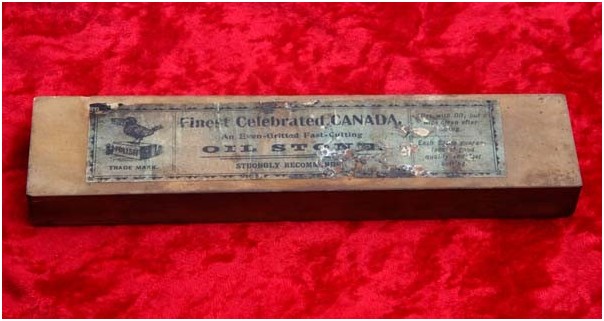
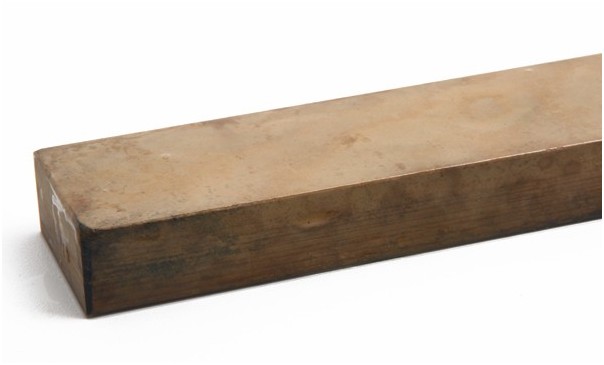
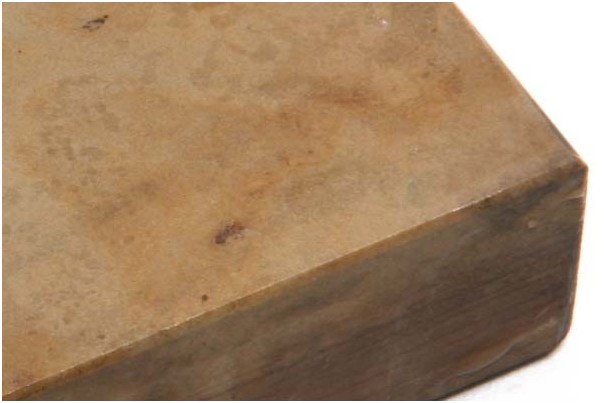
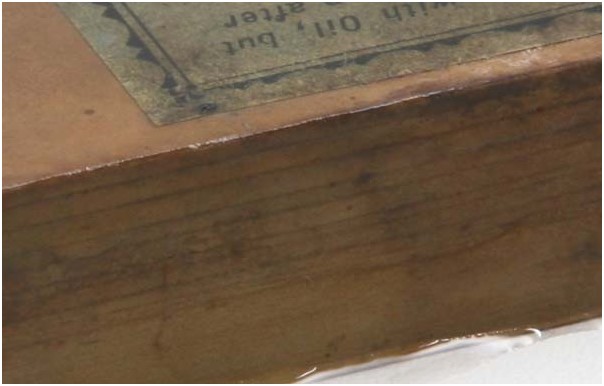
-
02-01-2014, 02:39 PM #22Historically Inquisitive



- Join Date
- Aug 2011
- Location
- Upstate New York
- Posts
- 5,780
- Blog Entries
- 1
Thanked: 4249
Certainly looks like a Hindostan twin, that said no mention of "Magog" , there another type of Canada Oilstone that fit the description from the old books better then this specimen, i think it belongs to member Ardparch, no layers and a light greyish color.

-
02-04-2014, 09:48 AM #23

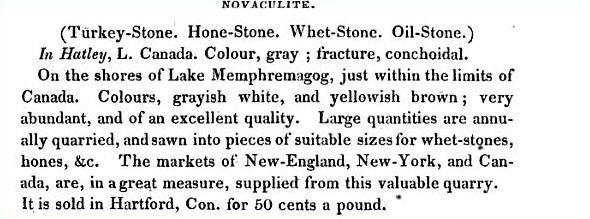
Just wanted to relink this Thread here in the thinking of the colour definition (which is the only one around in the web which i found here poested by Martin103).
The Stone Mike (Modine) posted is quite interesting in this thinking...
http://straightrazorpalace.com/hones...-thread-2.htmlLast edited by doorsch; 02-04-2014 at 09:51 AM.
-
02-08-2014, 04:43 AM #24Member

- Join Date
- Apr 2013
- Posts
- 63
Thanked: 3
From a historical perspective, I can understand there being some interest in owning or trying an original specimen. However, Novaculite is still being mined in Arkansas. All of these exotic locale Novaculite varieties are scarce and expensive. Why not just seek out the very finest of the current modern Novaculite stones available? Surely the very best Arkansas stones have something to offer?
-
02-08-2014, 05:44 PM #25Historically Inquisitive



- Join Date
- Aug 2011
- Location
- Upstate New York
- Posts
- 5,780
- Blog Entries
- 1
Thanked: 4249
-
02-08-2014, 05:56 PM #26

So, we know that the magog stones were mined in big quantities, but don't appear anywhere, and, there are at least a couple of varieties of hindostan like novaculite quarries in Canada, stones that appear more frequently here and there but are not the Magog stone.
Are we sure that there was an actual quarry there? Could it be that the stones came from somewhere else and were renamed as magog? It will not be the first time it happens. Or maybe all the hindostan like stones from Canada were sold as labeled Canadian oilstones from the same company including the Magog? It's strange that the stone doesn't appear anywhere.
-
02-08-2014, 06:07 PM #27Historically Inquisitive



- Join Date
- Aug 2011
- Location
- Upstate New York
- Posts
- 5,780
- Blog Entries
- 1
Thanked: 4249
Vasilis there is no doubt in my mind that the quarry was there. But its been closed for well over 150 years i think, erosion took place and the mine and building is pretty much all gone now, it was on an Island on the lake.
-
02-09-2014, 09:02 AM #28
 History of the "Magog Oilstone"
History of the "Magog Oilstone"
@vasilis: please read the informations and links i posted before as martin wrote there is no doubt about it...
The problem was also that the stones could only be quarried in a certain period because in other times the water would have been to high...
The quarry was in this thinking under the waterline in certain periods thru the year....sorry no source for this at the moment i will check and post if i found it...Last edited by doorsch; 02-09-2014 at 09:12 AM.
███▓▒░░.RAZORLOVESTONES.░░▒▓███
-
02-09-2014, 09:18 AM #29

Thanks for the research, made for a good read!
"still a man hears what he wants to hear, and disregards the rest." Simon unt Garfunkle
-
02-10-2014, 02:44 PM #30

Checked again and found it in "Gazetteer of Vermont" as the text was scanned im not shure that everything is printed correct it says:
"MIDDLEBURY. on the west side of a small uninhabited island situated at the mouth of Fitch's Bay, and about two miles north
of Canada line, is a considerable quarry of novac ulite known by the name of the "Magog Oil Stone." The vein of novaculite is
from two to eight feet wide where it has been quarried, and the length of the quarry is several hundred feet. It is situated beneath
a cliff, and, at the top, is interspersed with quartz. The vein of novaculite runs parallel with the cliff and lake shore, and is so
low that it is usually overflowed by the rising of the lake in spring "Magog Oil Stone" have been prepared for use and
vended in various parts of the nington."
So this quarry is quite a big one which is written down with "serveral" hundred feetADRSPACH: Already been in few well known quarries and you would be surprised how small they are. For example Whittle Hill is about size of 10x25 metres. You can even avoid this part if you locate source of the original material. I am sure you heard about recycling toombstones made out of Hindostan.
UPDATED:Here is a Picture of the Island with the Entry to Fitchs Bay (the East Arm of the lake) called "Hell Gate":http://books.google.de/books?id=aZBK...0stone&f=false

and some fun around the lake :-)
http://frontiersofzoology.blogspot.d...f-memphre.htmlLast edited by doorsch; 02-11-2014 at 08:25 AM.


 63Likes
63Likes LinkBack URL
LinkBack URL About LinkBacks
About LinkBacks







 Reply With Quote
Reply With Quote
